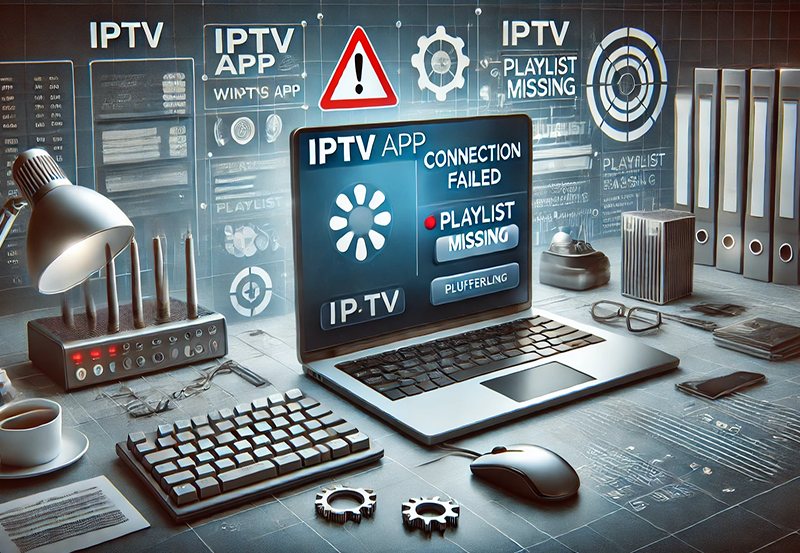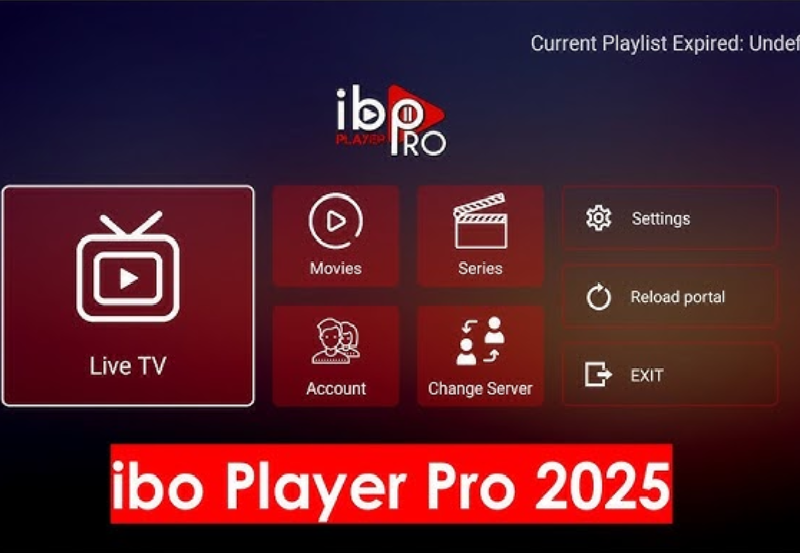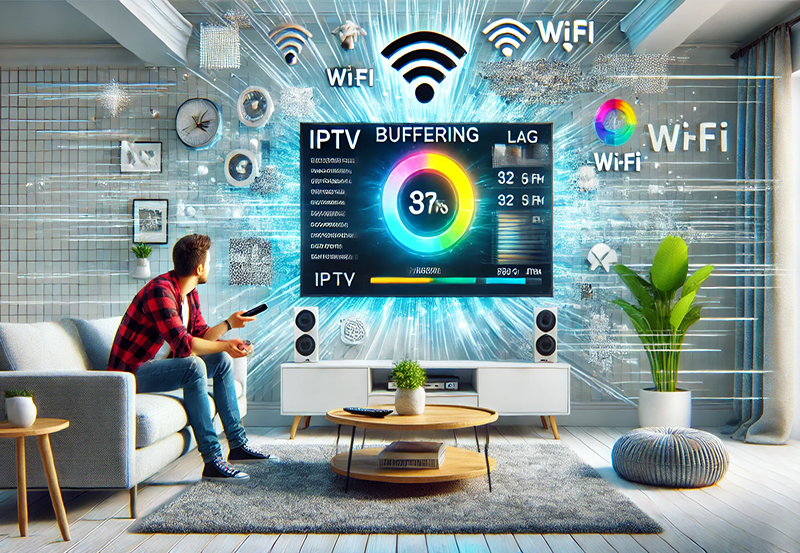Here’s a comprehensive draft for an article on “How Much Bandwidth Does an IPTV Stream Use?” along with suggestions for where to place photos. This article can be formatted for a WordPress page or post, and I’ve kept it straightforward to fit your SEO preferences.
Title: How Much Bandwidth Does an IPTV Stream Use?
Introduction
With the rise of IPTV (Internet Protocol Television), watching TV shows, movies, and live broadcasts over the internet has become increasingly popular. However, one of the most common questions new users ask is: how much bandwidth does IPTV use? Understanding IPTV bandwidth consumption is essential to ensure a smooth streaming experience, especially if you’re on a limited data plan or sharing a connection with others. In this article, we’ll explore the bandwidth requirements for IPTV and factors that influence it.
Understanding IPTV Bandwidth Requirements
IPTV transmits video and audio data in real-time over the internet. The amount of bandwidth IPTV uses depends on various factors, including the quality of the stream, the resolution, and the compression method. Let’s look at some of these factors in detail.
Suggested Photo: A visual showing different quality resolutions (like HD, Full HD, 4K) with approximate bandwidth requirements.
Factors Affecting IPTV Bandwidth Usage
- Resolution and Video Quality
The higher the resolution, the more bandwidth IPTV requires. Here’s a breakdown of approximate bandwidth consumption per resolution:
- Standard Definition (SD): 1–3 Mbps
- High Definition (HD): 3–5 Mbps
- Full HD (1080p): 5–8 Mbps
- 4K Ultra HD: 15–25 Mbps For instance, a 4K stream will consume significantly more bandwidth than an SD stream. If you’re watching multiple streams in different resolutions, your total bandwidth requirement will multiply. Suggested Photo: An infographic or chart showing bandwidth requirements for SD, HD, Full HD, and 4K.
- Compression Techniques
Video compression codecs, like H.264 and H.265 (HEVC), play a big role in bandwidth usage. Newer codecs, such as H.265, can deliver higher quality at lower bitrates compared to older codecs like H.264. This is especially useful for streaming services that want to provide high-quality video without overwhelming users’ internet connections. - Frame Rate (FPS)
High frame rates, such as 60 FPS, provide smoother motion but require more bandwidth than standard frame rates like 30 FPS. For instance, a 4K stream at 60 FPS will consume more data than a 4K stream at 30 FPS. - Audio Quality
While video generally takes up the most bandwidth, high-quality audio also adds to data consumption. Surround sound, for example, uses more bandwidth than stereo sound.
Calculating IPTV Bandwidth Needs for Different Scenarios
- Single Device Streaming
If you’re the only one using IPTV in your home, calculate the bandwidth needed based on the resolution and frame rate of the stream you plan to watch. For example, if you want to watch in Full HD (1080p), you’ll need around 5–8 Mbps. - Multiple Device Streaming
When multiple devices are streaming IPTV in a household, the bandwidth requirements add up. For example, if you have three devices watching HD content simultaneously, you might need 15–24 Mbps. - 4K Streaming
Streaming 4K IPTV requires a stable and fast internet connection, ideally around 20–25 Mbps per stream. If your internet speed fluctuates or dips below this range, you might experience buffering or quality drops.
Suggested Photo: Visual representation of bandwidth needs for single vs. multiple device streaming, possibly a graphic showing one, two, or three streams and how bandwidth requirements add up.
Estimating Monthly Data Usage for IPTV
If you’re on a metered connection, it’s crucial to know how much data IPTV consumes monthly. Here’s a quick estimate:
- 1 Hour of SD streaming: ~1 GB
- 1 Hour of HD streaming: ~2–3 GB
- 1 Hour of Full HD streaming: ~4–5 GB
- 1 Hour of 4K streaming: ~7–10 GB
For example, if you watch two hours of Full HD IPTV per day, expect to consume around 300 GB per month. Multiply these numbers based on your usage, and consider upgrading to an unlimited data plan if your consumption is high.
Suggested Photo: A table or infographic that breaks down estimated data consumption for different resolutions per hour and per month.
Tips to Optimize IPTV Bandwidth Usage
- Choose a Lower Resolution
Consider streaming in a lower resolution if bandwidth is a concern. HD content often provides a good balance between quality and data usage. - Check Compression Settings
Some IPTV providers offer options to adjust compression. Choosing a higher compression setting will lower bandwidth requirements without a significant loss in quality. - Monitor Internet Speeds
Use speed tests to ensure you’re getting the speeds your ISP advertises, especially if you’re experiencing buffering. If speeds are lower than expected, contact your ISP to address potential issues. - Limit Background Data Use
If multiple devices are connected to your network, they may slow down your IPTV stream. Limit background tasks or downloads on other devices when streaming to free up bandwidth. - Upgrade Your Plan
If IPTV is a big part of your household entertainment, you may want to consider upgrading to a higher-speed internet plan. Many ISPs offer packages suited for households that stream content on multiple devices.
How to Measure Your IPTV Bandwidth Usage
Monitoring your IPTV bandwidth usage can help you understand your exact requirements. Here’s how to do it:
- Use Router Monitoring Tools
Some routers have built-in monitoring tools that allow you to check data usage per device. This is helpful for understanding how much bandwidth IPTV specifically consumes. - ISP Account Dashboard
Many ISPs offer data usage monitoring via their online dashboards. Log in to your account to check your monthly data consumption, and see how IPTV usage aligns with your overall data. - Bandwidth Usage Apps
Certain third-party apps and software can help track data usage on individual devices. These tools provide insights into which apps or services consume the most data.
Suggested Photo: Screenshots of router dashboards or ISP data usage tools showing bandwidth usage for IPTV.
GEN IPTV connects through the internet, so you don’t need a satellite dish or any satellite equipment.
Conclusion
Understanding how much bandwidth IPTV streams use can help you optimize your internet plan and avoid unexpected buffering or data overages. By knowing your preferred resolution and streaming habits, you can make more informed choices about your internet plan, manage data effectively, and enjoy a seamless IPTV experience.
With the right plan and a few adjustments, IPTV streaming can be a reliable and enjoyable way to watch your favorite content.
Additional Notes for Image Placement:
You can add images or infographics related to each section above. If creating custom visuals, a few ideas include:
- Resolution comparison charts
- Data usage tables for different streaming times
- Bandwidth usage examples for single vs. multiple devices
Order now!




